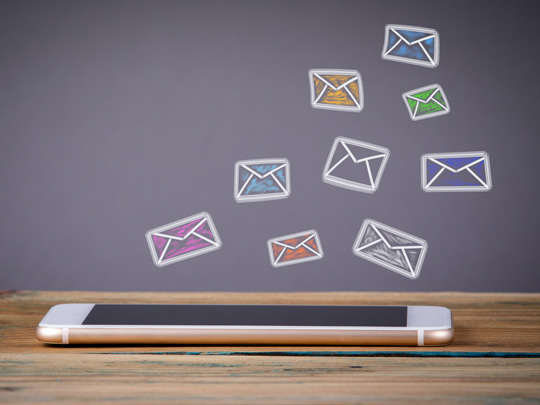Level Up Your Email Marketing with List Hygiene

When it comes to email marketing, many communicators measure success by growing their number of unique subscribers. But the number of list subscribers isn’t the only metric to track. Engagement rates, like open ratesExit Disclaimer and click-through ratesExit Disclaimer, are important metrics and tracking them can tell you how engaged and interested your audience is in your content.
Over time if lists become too big, engagement rates can drop. At this point, many communicators recommend conducting a list hygiene effortExit Disclaimer, which is the process of refining and cleaning your email lists to remove inactive subscribers.
To learn more about how and why organizations should clean up their email lists, we interviewed Claire Loxsom, Email and Partnerships Lead for GSA’s USAGov Outreach Team. Regardless of the size of your organization, the following tips can help you navigate your own list hygiene process.
HIV.gov: What exactly is “list hygiene”?
Claire: List hygiene is taking stock of your current email subscriber lists and making the decision to clean up your list using techniques that are both informed by your data and driven by your content strategy. This includes removing those who have become less engaged, those subscribed to content you no longer share, and those who may not be the right audience anymore due to changes in your internal goals and priorities.
HIV.gov: Why do organizations need to take on a list hygiene effort?
Claire: List cleanups allow organizations to target and serve the right content to subscribers in the right way. By cleaning out those who are less interested in your content, you can focus on those who are engaged and be able to analyze trends in content engagement, peak time of interest, etc., with your strongest audience.
HIV.gov: What are the benefits to list hygiene?
Claire: We see two major benefits:
- Keeping your lists relevant and lean. Think: quality over quantity!
- Updating and accessing tried-and-true content with an active audience.
HIV.gov: How does someone get started?
Claire: Define your goals for your list hygiene effort. For example, our email subscribers are organized into many topic lists, and our mission is to reach audiences with government information through link opens and click-throughs. Thus, we may focus on refining a certain topic-area audience, such as Money & Shopping, by what we define as “reached” vs. “unreached.”
Know that having a large list of subscribers is nothing compared to a smaller list of engaged subscribers. Engagement can be a true testament to how content is performing, and how your creative decisions are paying off.
CLAIRE LOXSOM, EMAIL AND PARTNERSHIPS LEAD FOR GSA’S USAGOV OUTREACH TEAM
Our current data-analysis tool captures many data points from our email sends, such as who opened, who clicked, and who ignored our emails. There is a defined measurement that someone who hasn’t clicked or opened an email in the last 15 emails we’ve sent is inactive.
Be sure to involve a re-engagement campaign as an element of your list hygiene. Following data is a great source of understanding, but asking your subscribers directly if they’d like to continue receiving your information can be just as, if not more, powerful. Start with those who haven’t responded or engaged with your sends in a set period of time, and allow them time to say “Yes, keep me subscribed” or “No, let me go” in some recorded fashion. To explore our experience with this process, feel free to explore our blog post “Letting Go of 85% of Our Email Subscribers”! Start incrementally, and be okay with this process (depending on your list size) at least once a year. It is okay to remove a little as you further define your needs. For example, in our last list hygiene exercise, we removed about 250,000 subscribers from three large lists (Money & Shopping, Parents, and Teachers) from the over 1 million contacts subscribed to USAGov. Though this was a large number, in comparison to the total, we purged less than 25 percent of our subscribers, and increased our engagement numbers due to a much more focused total audience.
HIV.gov: What advice do you have for this process?
Claire: Don’t be afraid to push the big delete button! It is great to approach this process incrementally, as list hygiene can be very intimidating. Of course, you don’t want to delete too many people, but you can switch your mindset to make this less intimidating: Know that having a large list of subscribers is nothing compared to a smaller list of engaged subscribers. Engagement can be a true testament to how content is performing, and how your creative decisions are paying off.
HIV.gov: Thanks so much, Claire and team! To learn more about USAGov’s list hygiene work, check out their blog. If you’d like to stay up-to-date with all things social and digital on HIV.gov, subscribe to our email newsletters.